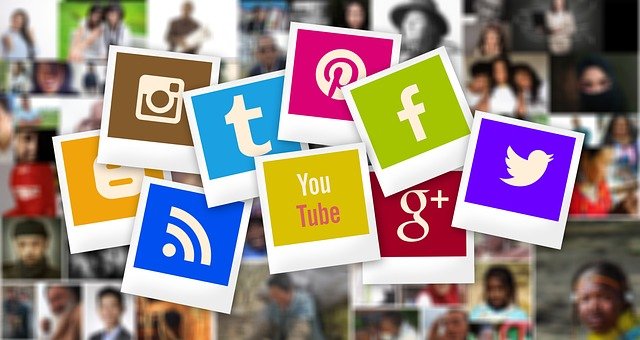What Is Social Media?
Social media is a hub of ideas and information which focuses on communication and community-based input, content sharing, interacting, and collaborating with others through virtual network platforms for engagement. The use of social media varies people use social media to stay in touch with their family and friends. Businesses use social media to create awareness, generate leads or conversions, and promote and track their products and services. Today in this article, we are talking about social media algorithms. So, stay tuned for this article.
Various tools help businesses to track and analyze the attention businesses get from social media. Facebook, Instagram, Twitter, and LinkedIn mobile applications make it easily accessible to promote and interact with others in social media. However, taking your brand on social media is easy but promoting your brand in social media is a task social media algorithms play an important role in promoting your brand in social media.
What Are Social Media Algorithms?
Social media algorithms are a set of rules that are used to sort posts and reels in followers’ feeds based on relevancy instead of publish time. In short social media algorithms prioritize the post based on their interests, and what users most likely want to see and engage with.
According to Antraajaal by tailoring the content shown to users, social media aims to provide maximum user engagement, increase watch time, and grow and retain the user base. Factors like the user’s past experience, the relevancy of the content, and the popularity of the content are some algorithms mostly considered by social media platforms. These algorithms are designed to analyze a large set of data, which includes user preference, post relevance, and engagement patterns, to deliver the most appropriate content to individuals.
Why Do Social Media Algorithms Exist?
Before the evolution of social media algorithms, social media users would see content in chronological order or reverse chronological order. Through this approach the most recent post would appear at the top of a user’s feed which leads to the older post will go down as a new post was published which results in a user having to scroll all the way down to see the post they want. It was not a personalized way and users experience was affected also as they would have a linear view of the content without any prioritization or filtering based on their preferences or engagement patterns.
Today thanks to social media algorithms content delivery to users is personalized and curated based on their interests, preferences, and past engagement. Algorithms analyze the various data points to prioritize relevant and engaging content to optimize the user experience and increase engagement on social media platforms. Because of social media algorithms, no two users’ feed looks the same. Even if they follow the same account.
How Do Social Media Algorithms Work?
Social media algorithms are complex systems designed to analyze user behavior, preferences, and interests to determine what content to show to each individual user. While the specific details of algorithms vary across different platforms, here is a general overview of how social media algorithms work:
- User activity tracking: Likes, comments, shares, clicks, and time spent on different posts. These are some user activities that social media algorithms track. By collecting data about the content users engage with and the profiles they follow.
- Data analysis: It looks for patterns and correlations to understand what type of content a user is likely to engage with based on their past behavior and similar user profiles to gain insights into user preferences and interests.
- Content categorization: By categorizing different types of content based on factors like topics, format, and user engagement metrics. It helps in determining the relevance of a piece of content to a particular user.
- Personalization: Using the insights gained from user activity tracking and data analysis tailoring the content shown to each user to create a personalized content feed for each user.
- Prioritization and ranking: The algorithm assigns a relevance score to each piece of content based on its analysis. It then ranks the content in the user’s feed based on this score, ensuring that the most relevant and engaging content is displayed prominently.
- Feedback loop: As the user engages with the content shown to them, the algorithm continuously learns and adapts. It tracks how users engage with different posts, gathering feedback to refine their understanding of user preferences and improve content recommendations over time.
- Business considerations: Social media algorithms also consider business objectives, such as promoting sponsored content or popular accounts, and may give these posts more visibility or incorporate them into the algorithmic recommendations.
Decoding Social Media Algorithms
To decode and outsmart social media algorithms:
- Create high-quality, relevant content.
- Encourage engagement from your audience.
- Use hashtags strategically.
- Post consistently and at optimal times.
- Analyze insights and adjust your strategy.
- Engage with your followers and respond promptly.
- Diversify your content formats.
- Collaborate with others in your niche.
- Consider paid advertising for broader reach.
- Stay updated with platform changes and trends.
Facebook Algorithm
The Facebook algorithm evaluates every post, story, and reel and then scores the content and arranges it in non-chronological order based on each individual interests.
Twitter Algorithm
It is known as Twitter for you algorithms that look at A tweet’s popularity and the kind of content users have liked in the past, also the algorithm tracks the user account they follow and the account they are following.
Instagram Algorithm
Instagram algorithms evaluate the most trending post, and the topic and track the popularity of that post or an object and then decide whether it could be shown or not on explore page.
LinkedIn Algorithms
This algorithm runs on a very large scale and determines what type of content is screaming on your LinkedIn feed. Also, track and measure which kind of content you’re engaging in the most.
Pinterest’s Algorithm
The Pinterest algorithm evaluates various factors like content quality, user engagement with uploaded pin, user preference domain quality, and related pins.
YouTube’s algorithm
YouTube algorithm takes various factors into account like user activity, engagement signals, relevance, video metadata, watch time, viewer feedback, collaborative filtering, and video freshness, and analyzing use past like search history and watch history.
Conclusion
In conclusion, social media algorithms serve as powerful tools for maximizing engagement across various platforms. They perform sophisticated analyses of user behavior, preferences, and content interactions to deliver personalized and relevant content to individuals. By understanding the key factors influencing algorithmic recommendations, content creators and marketers can strategically tailor their efforts to increase user engagement.
This includes creating high-quality content and facilitating user interactions, leveraging popular trends and hashtags to increase visibility. By aligning with these algorithms, individuals and businesses can foster an environment that generates vibrant and sustained engagement with their audiences, leading to greater reach, impact, and success. For more information regarding Digital Marketing stay connected with – Antraajaal
Also Read:
Technical SEO – Winning Strategies Revealed
How Does Digital Marketing Affect SEO?


